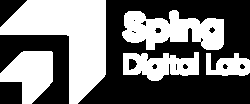From the lab, to the street: A user test in the car

Our UX Designer Lot Meerman shares her testing experiences with users of the Ridecloud app in this blog.
No matter what kind of digital platform you create or conceive, you never know how it will be used, which is why we regularly test our designs with end-users. Especially when the user operates the system in places where they must be able to do so safely and quickly. I will take you through an interesting case from one of our clients: Ridecloud.
The issue
Ridecloud from Amsterdam offers a service where users can compare various mobility services such as shared cars, bikes, and scooters, and it connects them to the specific provider to offer the complete customer journey in the app. This time, Ridecloud asked us for help in setting up and conducting a Usability test. This was to answer questions such as:
“Can the user manage to reserve a car – then drive a bit and conclude the reservation?”
In collaboration with Ridecloud, we prepared a test day where four users from the target group will be tested. In advance, we prepare a test script and ensure that it works through a pilot test. We also gather the necessary facilities and make a plan for collecting and analyzing the results. On this last point – analyzing results – I will go into more detail.

Tooling
We want to have a clear picture in the observation room of what is happening with the user. What they are doing in the App, but also the precise context in which they find themselves. Of course, you can use expensive and advanced eyetracking devices for this purpose, but we believe it can be done much smarter and cheaper.
That's why we use video communication software Zoom, which allows the moderator to record. The test participant is provided with a smartphone that records video, captures screen activity, and includes audio recording. The facilitator of the usability test is in the observation room and receives all video streams from the devices.
Observations
To ensure that we gather insights quickly and systematically throughout the day, we strive to document findings in a structured manner.
Prior to the test, we display all interview questions and test tasks on large sheets of paper on the wall. During the test, you can jot down the highlights and stick them next to the appropriate test task. To make it even simpler, we've assigned each test participant a color. This way, at the end of the day, you have a kind of matrix board where all the highlights for each test task and test participant can be easily compared.

What we ultimately delivered?
- User insights divided by feature and by user
- Recording materials (videos)
- Analysis matrix board
- List of recommendations and areas for improvement
It was a very successful test! The client learned a lot about the product but also about this testing method. Multiple stakeholders were able to observe and see how their ideas were received by "real" users. They are eager to work on improvements.
